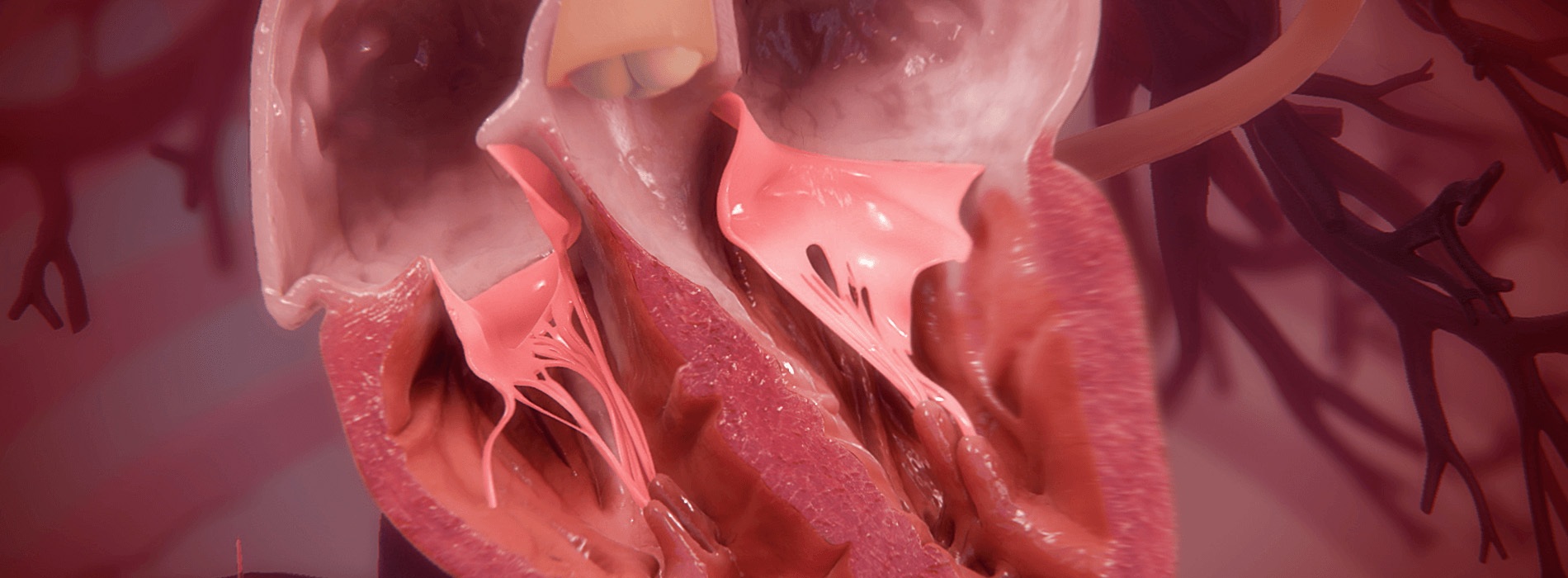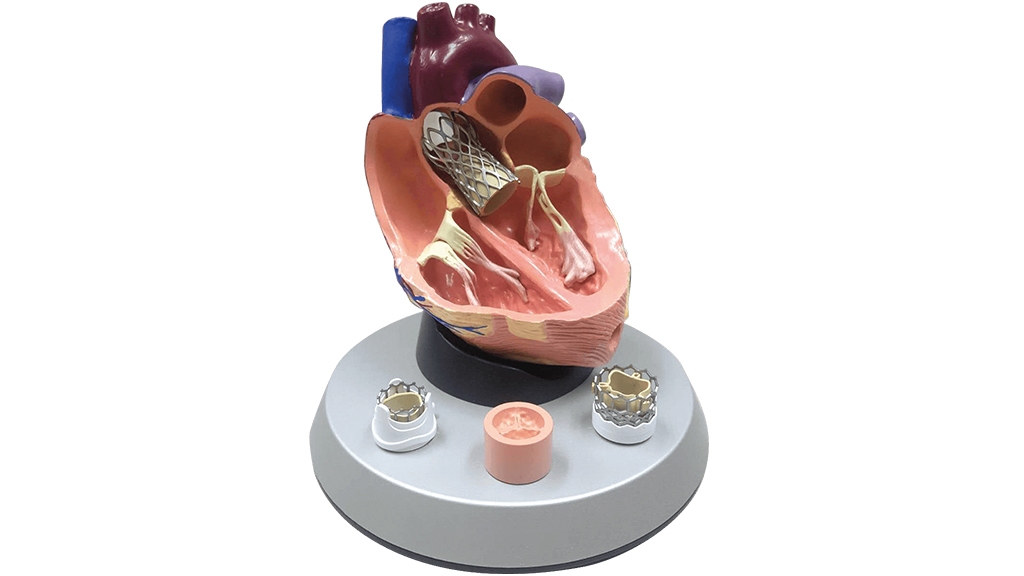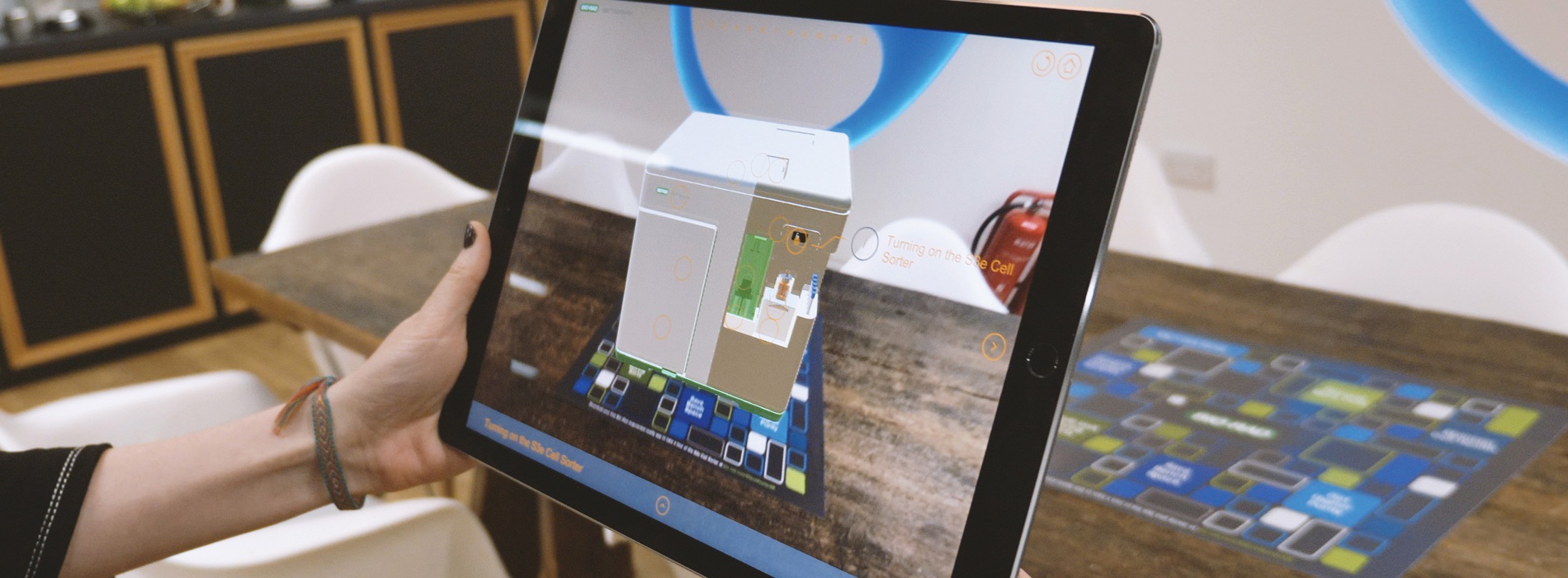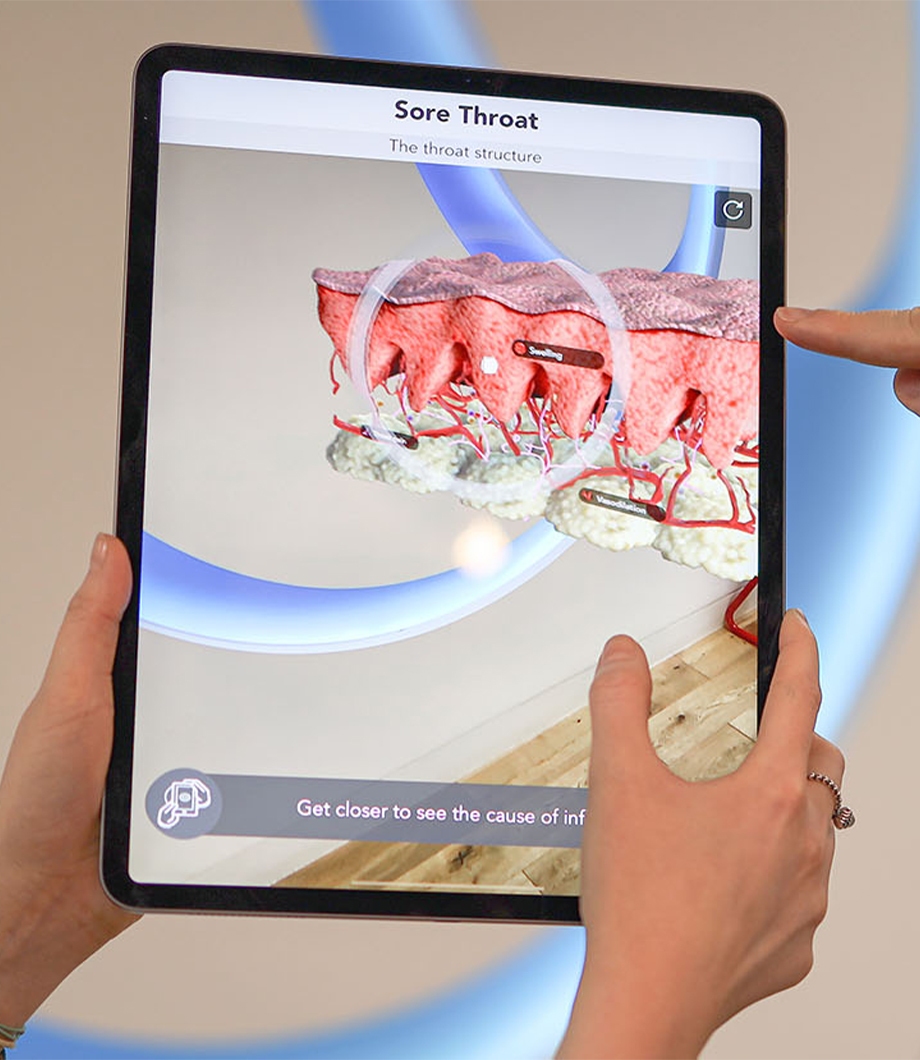
Cardiovascular Experience in AR
Augmented Reality
This augmented reality (AR) application models the aortic anatomy of the heart, tethering cutting-edge AR technology to a physical object that the user can explore.

The main objective of the experience is to demonstrate coronary re-access in a patient that has undergone the Transcatheter Aortic Valve Implantation (TAVI) procedure and to clearly represent the clinical outcomes and benefits of a range of valves produced by Edwards Lifesciences.
The booth centerpiece features a 3D-printed heart (pictured right) which when combined with innovative new AR technology allows the user to explore the organ and medical devices in remarkable detail. The 3D-printed model of the heart is brought to life by a digital overlay of colorful animation and graphics, simply by using an iPad to scan the physical model on the booth to trigger the AR app demonstration.
An additional version of the app uses plane tracking and does not require the 3D-printed model to trigger the experience. This allows the app to be quickly demoed to healthcare professionals (HCPs) in the field or clients during meetings, creating a versatile digital asset that can be utilized in a variety of settings.

This Augmented Reality app delves into great detail of the aortic valve anatomy, and its surrounding structures including the coronary arteries, aortic arch, and bicuspid valve.
The application models a TAVI valve within that aortic anatomy to represent the clinical conclusions that can be foreseen, the AR experience also demonstrates what happens when a TAVI valve is implanted in various anatomical situations.
The user can also explore aortic stenosis to discover the disease in a fascinating interactive setup.
This interactive booth experience was developed for Edwards Lifesciences to use at the European Society of Cardiology Annual Meeting as well as other industry trade events.
Are you interested in seeing how our scientific animation can help you?








